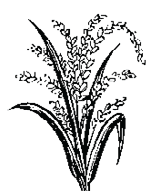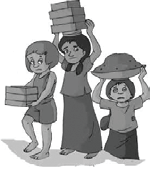Journal of Geography & Natural Disasters
Open Access
ISSN: 2167-0587
ISSN: 2167-0587
Research Article - (2015) Volume 5, Issue 1
Numerous disasters like cyclone, floods, river bank erosion, salinity intrusion etc are gradually escalating as consequence of climate change which is increasing risks and vulnerability for the coastal people of Bangladesh. The present study is concerned with climate induced risks and vulnerabilities that affect the lives of coastal inhabitants of Bangladesh. Study findings demonstrated occupational displacement during disaster and post disaster periods. The paper reveals that, in study areas, most of the inhabitants are strained to displace from their usual livelihood and enforced to depend on short term investment for temporary occupation, making them unable to recuperate swiftly after disasters. This phenomenon has also created an utter of unemployment and contributed to growing child labor among the coastal communities. People are forced to migrate into urban and sub-urban areas and take different occupation to survive. The paper is designed to build in job displacement experiences apart from the adverse impact of natural disaster namely tropical cyclone, storm surge, river erosion, flood and drought. Drawing from the last disaster this paper will attempt to identify more explicitly the mechanism behind the scarring effect of job displacement.
Keywords: Vulnerability; Job displacement; Climate change
Bangladesh is one of the most climate-vulnerable countries in the world [1]. Over the last thirty years, Bangladesh has experienced nearly 200 climate-related disasters accounted for around $16 billion economic losses including complete damage of asset, property, livelihoods and over thousands of death toll [2]. Climate change is one of the greatest obstacles for ending poverty and one of the gravest equity challenges of our time [3]. Owing to frequent number of disasters, this country is highly vulnerable to water related extreme events. Climate change is forcing people to take diversified occupation to maintain their livelihood [4]. Livelihoods of majority of the people in coastal areas depend largely on natural resources which in turn dependent on nature and climatic conditions. Frequent disasters such as floods, droughts, cyclone, and other weather associated phenomena affect household welfare through the destruction of physical, human as well as social capital. Economic vulnerability arising from displacement after post disaster period, is one of the most distinguished form of vulnerability experienced by a large portion of household in the study areas. This paper made an attempt to explain how occupations of poor people changes subject to climate variability and extreme events.
The total population living in the coastal areas of Bangladesh is about 36 million of which XX per cent are women [5]. The livelihoods of coastal communities are highly dependent on agriculture, fishing, forestry, transportation, and salt farming [6]. References show that, poverty and persistent inequality are the most salient of the conditions that shape climate related vulnerability [7]. They affect livelihood options and trajectories, and create conditions in which people have few assets to liquidate in times of hardship or crisis [8]. Hence poor and marginalized people usually have to displace from their primary occupation. They are the first to experience asset erosion, poverty traps, and barriers and limits to adaptation [9].
This study depicts that, climatic variations has already been realized in the study areas the seasonal rotation and pattern of rainfall have changed, salinity level have increased and the average temperature has amplified in the summer while winter has shortened. It is also observed that, a huge number of people are forced to displace from their primary occupation. Impact of climate change threatened crop production that forces farmers to depend on low-input and low-risk technologies making them less able to thrive back after disasters.
The study exhibits a significant variation in occupational pattern before and post disaster situations. This paper aims to provide a better understanding of these constraints owing to occupational shifting pattern, suggesting appropriate strategy option regarding climate change and natural disaster in the selected area as well.
Objective of the study
The overall objective of the study is to prepare a synthesis of the general relationship between climate induced natural disasters with occupational shifting in Bangladesh. In particular, the study examines the following:
To study the Occupational Changes pattern over the past 7 years in the study areas,
To determine the extent of Occupational shifting pattern due to climate change in the selected areas,
To suggest appropriate policy option addressing climate change and natural disaster.
The study collected primary data by applying multistage sampling technique. Bagherhat district of southwest coastal region of Bangladesh was purposively selected as the study areawhere severity of climate change impact is more visible. Further Sarankhola upazila of Bagherhat district was selected purposively. Subsequently at the third stage, three villages namely Rainda, Khontakhata and Southkhali were purposively selected to collect data from target respondents. Thus the people of these three selected villages formed the active population for this study. To determine an appropriate sample size 10 percent of the households of the selected villages were drawn as the target respondents who were the victims of climate change.
A total of 100 respondents were drawn as the sample size in the process of survey. A questionnaire containing both close-ended and open-ended was prepared to collect data. The questionnaire was pretested before final data collection. Data were obtained from households, who were selected from each village following a systematic random sampling technique: 1 household was chocked after 4 houses. The survey formats were designed to understand the condition of existing land use pattern, settlement and displacement pattern although land displacement status was ascertained for the last five natural disasters. The survey was conducted during July, 2013. Besides, Focus Group Discussion (FGD) was also conducted with 12 respondents (6 male and 6 female of different age group) which usually started with formal and open strategy. FGD lasted two hours and every participant completed written informed consent prior to the start of the focus group. In the FGD , the primary concern was with vulnerability to short-term hazards, in particular, tropical SIDR and AILA impacts. Collected data were processed for subsequent analysis using software such as SPSS and ATLAS.ti1.
Economic activity
In Sharonkhola Upazila, 25.04 per cent of the population is below 10 years old. Among the total population of aged 10 years, just below 27 per cent are not involved in jobs, followed by 2.43 per cent under employed, 32.1 per cent engaged in household work and the remaining 38.48 per cent in various occupations. The distribution of working people shows agriculture 15.89 per cent, industry 0.20 per cent, business 4.96 per cent, services 0.65 per cent, construction 0.65 per cent, transport and communication 0.89 per cent and others 15.24 per cent (BBS 2003).
Primary and secondary occupation
Table 1 implies the occupational diversification of Sharankhola Upazila. Crop sector Agriculture is the main occupation, although it had slightly reduced/increases in percentage in the recent years due to frequent disaster. Near about 15 per cent population including males and females were engaged in agriculture directly around the year whereas about 4.3 per cent engaged in fishing. As a primary occupation, proportionately the females were engaged larger in shrimp post larvae/fry collection. Adult males were engaged frequently in fishing in the Sundarbans. Although the major occupation of the adult males were fishing, they are also engaged with shrimp fry collection to earn additional income for their household.
| Occupations | Primary Occupation | Secondary Occupation |
|---|---|---|
| Farmer | 14.89 | 11.25 |
| Fishing | 4.26 | 15.00 |
| Daily labour | 37.24 | 33.75 |
| Small Business | 29.78 | *** |
| Wood cutter | 3.19 | 9.75 |
| Government employee | 2.13 | *** |
| Private employee | 2.13 | *** |
| Honey collector | 2.13 | 13.75 |
| Others | 2.13 | 2.50 |
| N/A | 2.13 | 13.75 |
Source: Field Survey, July, 2013
Table 1: Primary and Secondary Occupation
As secondary occupation, 11.25 per cent men and women are engaged in farming in straw cutting or revoking weeds in the adjacent agricultural lands. The fishing rate is 11.25 per cent. Since increasing salinity, the agricultural lands were transferred as Gher. On the other hand, some households moved out of agriculture to take up other occupations, since the land is unproductive. About 33.75 per cent people are engaged in daily labor as secondary occupation. Due to lack of capital and physical facilities, people are less engaged in business sector in general. Little involvement in service sectors due to the extensive illiteracy. Very few of them were engaged as monthly payment servants in private sectors shrimp/ white fish whole seller agency (Arot). Leisure period or off-peak season they were involved in wage labor.
Household income from primary sources
Significant change in income pattern was observed in the study area. Rainda, Khontakhata, Sharonkhola was once well known as a storehouse of paddy. It was self sufficient in food before the onset of cyclone SIDR. Table 2 shows that, the income of households from primary sources principally ranges between Tk 15,001 and Tk 30,000 annually , in Rainda 51.9 per cent, Khontakhata 41.9 per cent and Sharonkhola 39.5 per cent. The second prime income group is Tk 30,001-45,000 per year, 18.5 Per cent in Rainda, 29 Per cent in Khontakhata and 21.1 Per cent in Shronkhola village. The income group of more than Tk 75,000 per year is comparatively less, only found in Sharonkhola village 5.3 per cent.
| Income (In TK) Per Year | Rainda | Khontakhata | Sharonkhola | |||
|---|---|---|---|---|---|---|
| Frequency | Percent | Frequency | Percent | Frequency | Percent | |
| Up to15000 | 3 | 11.1 | 4 | 12.9 | 3 | 7.9 |
| 15001-30000 | 14 | 51.9 | 13 | 41.9 | 15 | 39.5 |
| 30001-45000 | 5 | 18.5 | 9 | 29.0 | 8 | 21.1 |
| 45001-60000 | 5 | 18.5 | 5 | 16.1 | 7 | 18.4 |
| 60001-75000 | *** | *** | *** | *** | 3 | 7.9 |
| >75000 | *** | *** | *** | *** | 2 | 5.3 |
| Total | 27 | 100.0 | 31 | 100.0 | 38 | 100.0 |
Source: Field Survey, July, 2013
Table 2: Household Income from Primary Sources.
Household income from secondary sources
Most farmers in the study areas have changed their secondary occupation and found to be earning from small-scale trade, day labor, shrimp Post Larvie collection. It appears from Table 3 that, only 34 per cent households of Rainda village 25.1 per cent of Khontakhata and 26.5 per cent of Sharonkhola village earn up Tk15,001 to 30,000 yearly and the percentage of households earn above this amount of money per year from their secondary occupation are insignificant . The Table also reveals that, in Rainda and Khontakhata village, no household was found whose income ranged Tk 45,000 between Tk 75,000. Only in Sharonkhola 2.9 per cent household earns TK over 75000 in a year.
| Income (In TK) per year | Rainda | Khontakhata | Sharonkhola | |||
|---|---|---|---|---|---|---|
| Frequency | Percent | Frequency | Percent | Frequency | Percent | |
| Up to15000 | 6 | 23.1 | 13 | 36.1 | 11 | 30.6 |
| 15001-30000 | 9 | 34.6 | 9 | 25.1 | 9 | 26.5 |
| 30001-45000 | 11 | 42.3 | 14 | 38.9 | 13 | 38.2 |
| 45001-60000 | * | * | * | * | * | * |
| 60001-75000 | * | * | * | * | * | * |
| >75000 | * | * | * | * | 1 | 2.9 |
| Total | 26 | 36 | 34 | |||
Source: Field Survey, July, 2013
Table 3: Household Income from Secondary Sources.
Number of earning members of different villages
The nature of services and facilities consumed by a family depends on the monthly income and the number of earning members. It is always assumed that, the higher number of earning member of a family will lead to consume better services and facilities. Again, number of earning member of all categories is comparatively less in three earning members.
Trends of occupational change
In Sharonkhola Upozilla, there exist three main occupational classes of people namely farmer fisherman and daily labor. As an overall trend, currently 38.3 per cent people deeply embedded with agriculture before cyclone SIDR which declined substantially by 11.7 per cent hence the other 26.6 per cent people changed their occupation after cyclone SIDR. Thus only 13.3 per cent people was employed as day laborer whereas the percentage increased significantly to 48.3 per cent. The percentage slumped because remained number of farmer and fisherman turned to daily labor in later due to disaster. According to the figure as comparing the rate of garments employee 1.7 per cent people works in garments but this rate increased to 11.7 per cent after disaster. In terms of climate change impacts on occupation has received considerable attention relative to other resource sectors. This again explains that the region as a whole has been shattered economically and that more people are now working hard to earn a modest sum just for their survival (Table 4).
| Types of Occupation | Previous Occupation | Current Occupation | ||
|---|---|---|---|---|
| F | Percent | F | Percent | |
| Agriculture | 23 | 38.3 | 7 | 11.7 |
| Fishing | 9 | 15.0 | 3 | 5.0 |
| Daily Labor | 8 | 13.3 | 29 | 48.3 |
| Businessman | 5 | 8.3 | 4 | 6.7 |
| Wood Cutter | 2 | 3.3 | 2 | 3.3 |
| Government Employee | 3 | 5.0 | 3 | 5.0 |
| Private Employee | 2 | 3.3 | 1 | 1.7 |
| Garments Employee | 1 | 1.7 | 7 | 11.7 |
| Others | 7 | 11.7 | 4 | 6.7 |
Source: Field Survey, July, 2013
Table 4: Occupational Change Trends.
Effects of continuous natural disaster on primary occupation
Occupation has strong relative relations with natural disaster. In SharonkholaUpozilla, natural disaster started in early 1990’s which commenced a drastic occupational change. Since then, shrimp cultivation was adapted in spite of rice cultivation due to continuous natural disaster, to adopt with the waterlogged situation during post disaster period. When shrimp culture flourished extensively in the 1995, the primary occupation of the villagers turned into shrimp cultivation from rice. Table 5 shows that the numbers of rice cultivators has decreased over the decades and the number of shrimp cultivators has increased. This change has primarily occurred due to natural disaster. In between 1985 to 1995, change occurred in rice cultivation 33.3 per cent and between 2004 to 2009 rice cultivation dramatically decreased to 8.3 per cent. Shrimp cultivation had started rapidly due to more economic return than rice cultivation, so the rice cultivators started practicing shrimp cultivation in their land. Moreover to adopt with the waterlogged situation, most of the households have turned their primary occupation into shrimp cultivation. Natural disaster has less effect on businessmen and service holders, so no major change has occurred in their occupation. The number of unemployed people is decreasing because the unemployed people are now getting engaged in shrimp culture activities. So it is clear that natural disaster has a significant impact on occupational change especially from rice cultivation to shrimp cultivation (Figure 1).
| Primary Occupation | Change Over the Period | ||
|---|---|---|---|
| 1985 to 1995 | 1995 to 2004 | 2004 to 2009 | |
| Rice cultivation | 33.3 | 11.6 | 8.3 |
| Shrimp Farming | 1.4 | 41.6 | 51.2 |
| Petty Business | 31.6 | 10.1 | 23.5 |
| Service holder | 1.7 | 9.7 | 15.0 |
| Unemployed | 32.0 | 27.0 | 2.0 |
Source: Field Survey, July, 2013
Table 5: Occupational Change over the Period of (1985-2009).
Effects of continuous natural disaster on secondary occupation
Due to economic hardship, more people in the study areas earn income from more than one source; this is reflected in Table 6 where villagers are earning by various source of secondary occupation such as ‘Fishing in beel areas’, ‘Net making’, ‘Petty business’, ‘Day labor’, etc. Thus the incidence of secondary occupation compared to only a few before cyclone SIDR in the study areas bespeaks of a desperate situation prevailing. Affected people are primarily engaged with shrimp cultivation that returns more money from the same land. Those who have not faced natural disasters and practicing rice cultivation as a primary occupation earn less monetary profit. Moreover the cropping intensity of the agricultural land is one and in some cases it varies from one to two which reveals that people related with rice cultivation has higher probability of having a secondary occupation like fishing in beel areas, net making, small business, day labor, etc. Table 6 shows the dramatic change in secondary occupational group from the year between1995 to 2004; about 42 per cent change occurred in fishing occupation. From 1995 to 2004 petty business occupation dramatically changed 8.2 per cent as in between 2004 to 2009 the change was drastically raise to 17.7 per cent. The year between 2004 to 2009 the change occurred 11.1 per cent in fishing as the prime secondary occupation. On the contrary unemployment rate increased to 29.6 per cent.
| Secondary Occupation | Change in Secondary Occupation Due to Frequent Natural Disaster | ||
|---|---|---|---|
| (1985 -1995) | (1995 2004) | (2004- 2009) | |
| Fishing | *** | 42 | 11.1 |
| Net making | *** | 22.2 | 14.2 |
| Petty business | 55.3 | 8.2 | 27.4 |
| Day labor | 37.5 | 11.7 | 17.7 |
| Unemployed | 7.2 | 15.9 | 29.6 |
Source: Field Survey, July, 2013
Table 6: Changes in Secondary Occupation from 1985 to 2009.
Table 7 shows the information regarding the occupational change according to age group. It is vivid that both in the category of fishing is 6.7 per cent children are deeply engaged who aged between 11 to 20 years. It is found that most of them have dropped out of the educational system and have chosen fishing/day labor as their occupation. In the age group of 31 to 40 about 3.3 per cent population displaced to agriculture 23.3 per cent in daily labor. Incredibly drastic change occurred in the occupation of garments employment 5 per cent in the age group of (41 to 50). On the contrary, in the age group between (31 to 40) a vast majority of population changed to day labor. This rate proves that after post disaster period a huge amount of population taken displaced prominently to daily labor as well as garments employee.
| Age Group | Displaced Occupation | ||||||
|---|---|---|---|---|---|---|---|
| Agriculture | Fishing | Daily Labor | Businessman | Wood Cutter | Garments Employee | Others | |
| Below 10 Years | *** | 1.8 | 1.7 | *** | *** | *** | *** |
| 11-20 Years | 1.5 | 6.7 | 8.3 | 1.9 | *** | *** | *** |
| 21-30 Years | 1.7 | 1.7 | 15.5 | *** | 1.7 | 2.2 | *** |
| 31-40 Years | 3.3 | *** | 23.3 | 3.4 | 1.8 | 3.3 | 2 |
| 41-50 Years | 5.5 | *** | *** | 1.7 | *** | 5 | 3 |
| 51-60 Years | *** | *** | 1.7 | *** | *** | *** | 1.3 |
| Above 60 Years | *** | *** | *** | *** | *** | *** | *** |
Source: Field Survey, July, 2013
Table 7: Occupational Change According to Age Group.
Affected sectors due to natural disaster (by weighted index method)
Table 8 shows that ‘agriculture and fisheries’ is the highest affected sectors by natural disaster. It has the lowest mean 1.35 which is calculated by weighted index method.
| Name of Affected SectorsDue to Natural Disaster | Frequency | Rank of Affectedness (1= Very highly affected, 2 = Highly affected, 3 = Moderately affected, 4 = less affected & 5 = least affected) |
Mean | Exact order | |
|---|---|---|---|---|---|
| Minimum | Maximum | ||||
| Agriculture | 100 | 1 | 3 | 1.35 | 1 |
| Fisheries | 100 | 1 | 4 | 2.14 | 2 |
| Economy and Business | 100 | 2 | 4 | 2.89 | 3 |
| Livestock & Poultry | 100 | 2 | 5 | 3.76 | 4 |
| Other sources of Income | 100 | 2 | 5 | 4.59 | 5 |
Source: Field Survey, July, 2013
Table 8: Different Sectors Affected By Natural Disaster.
The findings of the paper provide a details overview of the types of climate variability and climate induced disasters and their impacts on occupational displacement of the study area. It is evident that, climate induced disasters forced people to displace occupational pattern and increase peoples’ vulnerabilities. Climate change affected people in Sarankhola are unable to perform their agro-based productions and face other occupational risks which certainly increase unemployment rate as a common phenomenon. Affected people have to engage in more than one occupation to meet up their ends. Children are unable to continue their education and have to have involved with occupation to survive. Another important impact arises that climate change affected people do not want to move from their areas, climate induced disasters force them to migrate outside of village along with nearby cities in search of risky occupation (Table 9).
| Problem | Priority Ranking | Observation | |
|---|---|---|---|
| Today | 7 Years Ago | ||
 |
2 | 8 | •Primary occupation and have own land for rice cultivation •Loss of land and forced to displace from agricultural occupation |
 |
7 | 4 | •Not as much as popular •Most of the respondents have to adapt Shrimp cultivation in spite of rice cultivation |
 |
5 | 2 | •Less people were chosen day labor as their primary occupation •A significant portion of farmer and fisherman turned to daily labor in later due to disaster |
 |
7 | 2 | •Not required •Forced migrated people are commonly engaged with rickshaw pulling in urban areas |
  |
3 | 8 | •Most people rear livestock not for earning basis •due to economic hardship, most of the people who rearing livestock chosen this as their main occupation along with more than one source just to make ends meet |
 |
4 | *** | •Have huts with own homestead land •Forced to migrate in search of occupation at urban areas |
 |
7 | 3 | •Credit not available and not required as high priority •Need credit as a priority basis |
 |
*** | 8 | •Not as much as popular due to disaster •Aged between 11 to 20 are dropped out from educational system and get involved in fishing/day labor as their occupation |
Participants:AbulKashem (45), Rahmat Ali(37), Kulsum Begum (35), Shanti Rani Mondol (45), BikashMondol(30), ShuvashiniDashi (60), Aklima (23), Purnima Roy (42), AbdusSattarGazi (55), Monoranjan Das(46)
Table 9: Long-Term Earnings Losses of Displaced Workers.
• Government and NGOs should create job opportunities by introducing small scale business;
• Creating new and relocate the garments factories for creating job opportunities and develop communication system;
• Government should include Corporate Social Responsibility (CSR) in Disaster Risk Reduction;
• Saline tolerant paddy cultivation, alternative crops and livestock that are resilient to salinity intrusion (and higher winter temperatures in particular) should all be promoted;
• The initiatives of integrating climate change adaptation into the DRM operational frameworks had helped to identify locally relevant adaptation practices for current and future risks, and this project demonstrated their availability for possible replication under changing climatic conditions in the future;
• Adjustment of existing agricultural practices to match future anticipated risks (e.g. adjustment of cropping pattern, selection of adapted varieties of crops; diversification of cropping and/ or farming systems; better storage of seeds and fodder; dry seed beds; switch to alternative crops; more efficient use of irrigation water on rice paddies; more efficient use of nitrogen application on cultivated fields; improved water management including water harvesting);
• Introducing alternative enterprises/farming systems (e.g. adoption of mango or Jujubi as cash crop, goat rearing and poultry production; pulses as additional crop after monsoon season);
• Socio-economic adjustments (livelihood diversification, market facilitation etc.);
• Strengthening of community resilience, including local institutions and self-help capacities;
• Strengthening of formal institutional structures and environment;
• Policy formulation to catalyze enhancement of climate adaptive on farm and off farm livelihood opportunities;